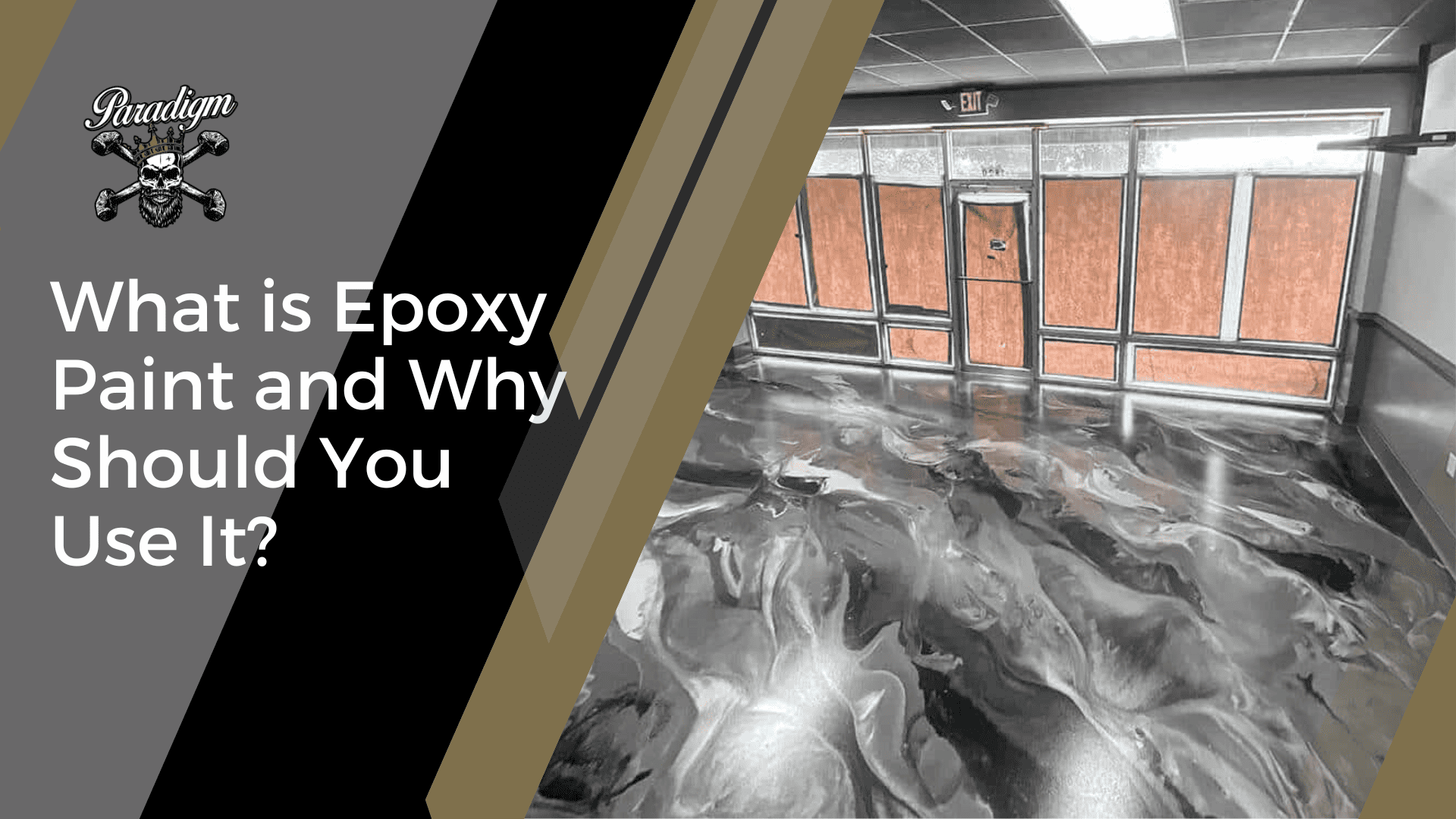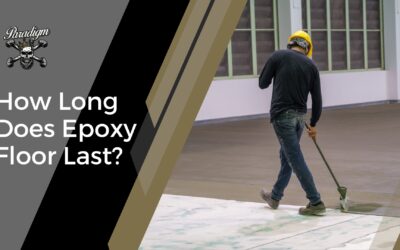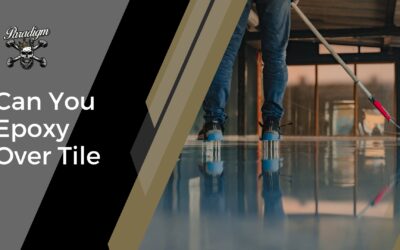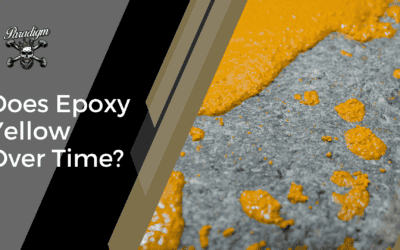Epoxy paint has become increasingly popular in recent years, especially for flooring applications. It is a durable and long-lasting paint that provides a range of benefits over traditional paints. But what exactly is epoxy paint, and why should you use it? In this article, we will explore the ins and outs of epoxy paint, including its benefits, applications, and maintenance.
Table of Contents
Introduction to Epoxy Paint
Epoxy paint is a two-part coating made up of an epoxy resin and a hardener. When these two components are mixed together, they chemically react to form a strong, durable finish that is resistant to chemicals, abrasions, and stains. Epoxy paint is used in a variety of applications, including flooring, walls, and metal surfaces.
What is Epoxy Paint and How is it Different from Other Paints?
Epoxy paint is different from other paints in several ways. First of all, it is much stronger and more durable than traditional paints. It is also resistant to a wide range of chemicals and stains, making it ideal for industrial and commercial applications. Epoxy paint is also easy to clean and maintain, as it does not absorb liquids like traditional paints.
Another way that epoxy paint is different from other paints is in its application. Epoxy paint requires special preparation and application techniques that are different from traditional paints. For example, the surface must be properly cleaned and sanded before applying epoxy paint. The paint must also be mixed in the correct proportions and applied in thin, even coats.
Benefits of Using Epoxy Paint
There are many benefits to using epoxy paint over traditional paints. One of the biggest benefits is its durability. Epoxy paint is much stronger and more resistant to damage than traditional paints. It is also resistant to chemicals, stains, and abrasions, making it ideal for high-traffic areas.
Another benefit of epoxy paint is its versatility. It can be used on a variety of surfaces, including concrete, metal, and tile. Epoxy paint can also be customized with a range of colors and finishes, including matte, satin, and high-gloss.
Epoxy paint is also easy to clean and maintain. It does not absorb liquids like traditional paints, so spills can be wiped up easily. It also resists fading and yellowing, so it will maintain its color and appearance for many years.
Epoxy Paint for Flooring: Advantages and Disadvantages
One of the most popular applications for epoxy paint is for flooring. Epoxy flooring painting has become increasingly popular in commercial and industrial settings due to its durability and resistance to damage. However, there are both advantages and disadvantages to using epoxy paint for flooring.
One of the biggest advantages of using epoxy paint for flooring is its durability. It is much stronger and more resistant to damage than traditional flooring options like carpet or tile. It is also resistant to chemicals, stains, and abrasions, making it ideal for high-traffic areas.
Another advantage of epoxy flooring painting is its customization. Epoxy paint can be customized with a range of colors and finishes, allowing you to create a unique look for your space. It can also be used to create patterns and designs on the floor.
However, there are also some disadvantages to using epoxy paint for flooring. One of the biggest disadvantages is its cost. Epoxy flooring painting can be more expensive than traditional flooring options like carpet or tile. It also requires special preparation and application techniques, which can add to the cost.
Another disadvantage of epoxy flooring painting is its slippery surface. Epoxy paint can be slippery when wet, which can be dangerous in some settings. However, this can be mitigated by adding anti-slip additives to the paint.
How to Prepare Your Surface for Epoxy Paint
Proper preparation is essential when using epoxy paint. The surface must be clean, dry, and free of any contaminants before applying epoxy paint. Here are the steps to prepare your surface for epoxy paint:
- Clean the surface thoroughly with a degreaser or cleaner to remove any dirt, oil, or other contaminants.
- Sand the surface to create a rough texture that will allow the paint to adhere properly.
- Clean the surface again to remove any dust or debris from sanding.
- Mask off any areas that you do not want painted.
- Apply a primer if necessary.
Steps to Apply Epoxy Paint
Once your surface is properly prepared, you can begin applying epoxy paint. Here are the steps to apply epoxy paint:
- Mix the epoxy paint according to the manufacturer’s instructions.
- Apply the paint in thin, even coats using a roller or brush.
- Allow the paint to dry according to the manufacturer’s instructions.
- Apply a second coat if necessary.
Epoxy Paint for Tile and Metal Surfaces
In addition to flooring, epoxy paint can also be used on tile and metal surfaces. Epoxy paint for tile is a popular option for bathrooms and kitchens, as it provides a durable and easy-to-clean finish. Epoxy paint for metal surfaces is also a popular option for industrial and commercial applications, as it provides a strong and corrosion-resistant finish.
When using epoxy paint on tile or metal surfaces, the preparation and application techniques are similar to those used for flooring. The surface must be properly cleaned and sanded, and the paint must be applied in thin, even coats.
Maintenance and Cleaning of Epoxy Painted Surfaces
Epoxy painted surfaces are easy to clean and maintain. They can be wiped down with a damp cloth or mopped with a mild detergent. However, it is important to avoid using harsh chemicals or abrasives, as these can damage the paint.
Popular Brands of Epoxy Paint
There are many brands of epoxy paint on the market, each with its own unique features and benefits. Some of the most popular brands include Rust-Oleum, Sherwin-Williams, and Behr.
Is Epoxy Paint Right for Your Project?
Epoxy paint is a durable and long-lasting paint that provides a range of benefits over traditional paints. It is ideal for high-traffic areas and is resistant to chemicals, stains, and abrasions. However, it is more expensive than traditional paints and requires special preparation and application techniques.
If you are considering using epoxy paint for your project, it is important to weigh the pros and cons and determine if it is the right choice for your needs. If you decide to use epoxy paint, be sure to follow the proper preparation and application techniques to ensure a long-lasting and durable finish. If you are looking for high-quality epoxy flooring painting, contact Paradigm Concrete Finishes for a free estimate.




